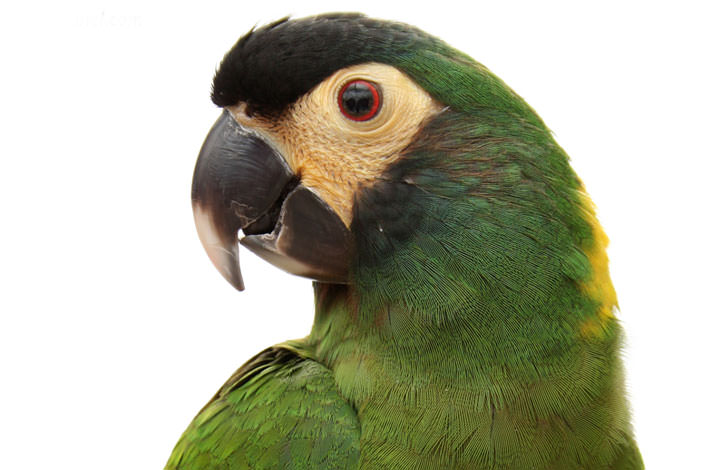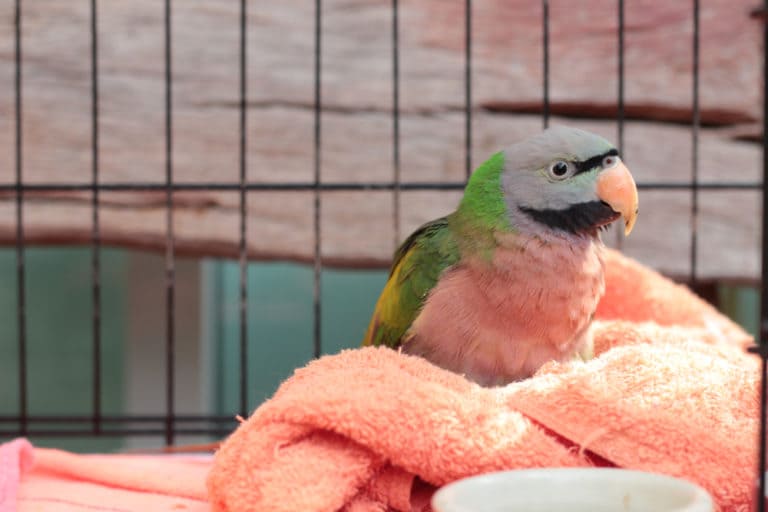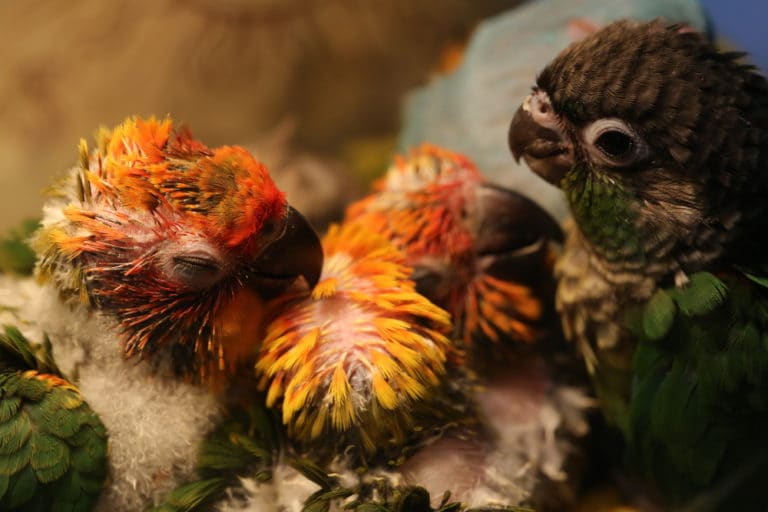Tumors and cancers are something all pet parents worry about, including caretakers of pet birds. From parrots to budgerigars, finches to cockatoos, and lovebirds to macaws, new bumps or masses can have big implications for your pet’s health.
So, if you’ve spotted a lump on your feathery friend that you’ve never noticed before, it’s time to take action. Ahead, discover expert-guided information on tumors in birds and find out the types and symptoms to be on the lookout for.
In This Guide
Types of Tumors in Birds
Just like in people and other animals, there are many types of tumors that can occur in birds. Avian tumors can be of the spreading, aka malignant, variety or of the non-spreading, aka benign, type. They also can be external or internal. And depending on the avian species, some tumors may be more common than others.
Here’s the good news: Ttumors in pet birds are relatively rare. For example, a 2023 study from Australia found the incidence of neoplasia, or the uncontrolled, abnormal growth of cells, in companion and aviary birds to be only 2.45 percent.
The types of tumors that exotic veterinarians tend to see more frequently in birds include:
- Kidney or testicular tumors in parakeets
- Preen gland tumors, found in the special oil gland at the tail base in birds, normally used for coating their feathers
- Xanthomas and lipomas, also known as fatty tumors, typically found in the skin. They are benign tumors but can cause large growths.
- Liposarcomas, a rare type of cancer that can form in the fat cells
Less commonly, avian veterinarians find cancer in:
- the sinuses
- oral cavity
- lungs
- air sacs
- liver
- spleen
- kidneys
- bones
- vascular and connective tissues
- ovaries/reproductive tract
- thyroid gland
- brain
Lymphoma, or lymphosarcoma, a specific type of cancer originating in the lymphatic system and/or blood, can affect multiple organs, given the widespread nature of the lymphatics throughout the body. As a result of lymphoma, the liver is the most commonly affected organ, then the spleen and kidneys.
Additionally, squamous cell carcinoma, a type of skin cancer, can occur on a bird’s skin and beak but can also be found inside the mouth, esophagus and crop (the muscular pouch near the gullet).
Other types of avian cancers include:
- Fibrosarcoma: Cancer of fibrous tissues
- Papillomas: Growths caused by a virus that can affect various tissues
- Adenocarcinoma: Cancer arising from glandular tissues
- Hemangiosarcoma: Cancer of blood vessels
- Melanoma: Cancer originating in pigment-producing cells (melanocytes)
Diagnostic tests such as imaging (that can include a radiograph) and biopsy are needed to determine the type of tumor as well as the extent of cancer in the bird’s body.
What Do Bird Tumors Look Like?
An avian tumor’s appearance depends on where the tumor is located and what kind it is. For example, fatty tumors like xanthomas and lipomas are usually firm, yellow and can be lumpy. Other skin tumors can be pink, ulcerated and prone to bleeding.
Cancer can also cause swelling of different body parts, which may or may not be visible on an exam. The neurologic system can also be affected, such as in kidney tumors, which can cause signs of lameness.
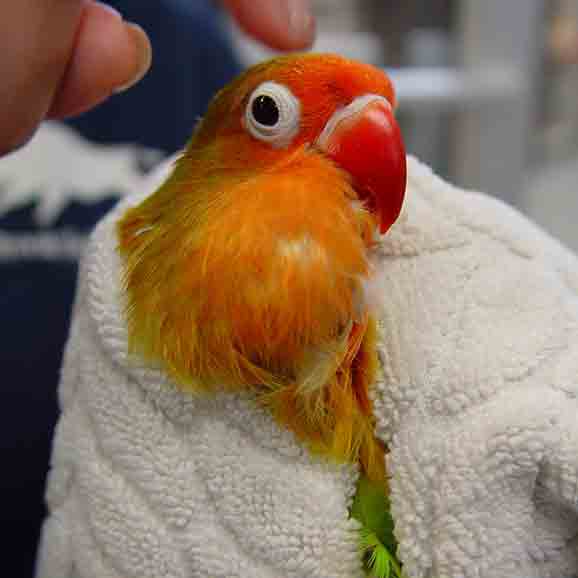
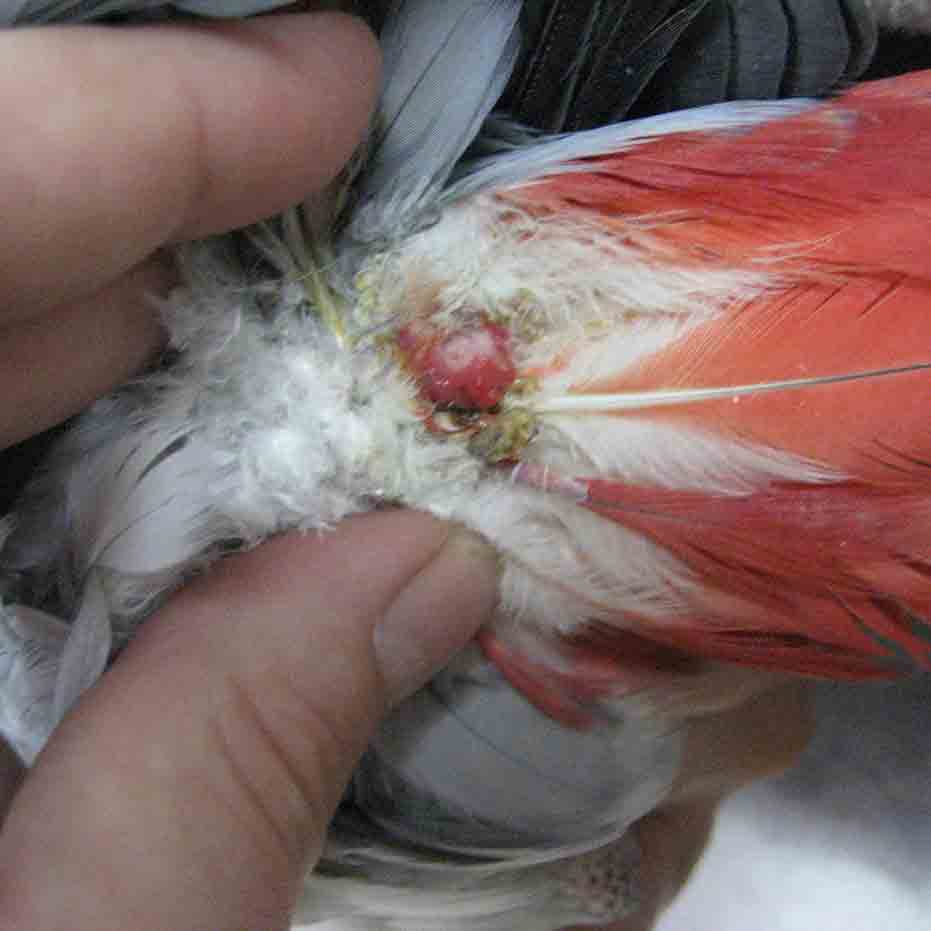
Treatment of Bird Tumors
As you consider tumor treatment options for your bird, there are some steps to keep in mind. Treatment will depend on the location of the tumor, but typically, veterinarians first try to surgically remove the tumor, or tumors, whenever possible. Surgical removal is ideal when the tumor can be removed completely.
Also, certain malignant tumors may respond to medical therapy. For example, testicular tumors can sometimes be decreased in size using hormonal therapy like a leuprorelin injection.
Chemotherapy is an option, especially in tumors that cannot be removed or have spread to other parts of the body. Radiation therapy is also an option when surgery is not possible. But unfortunately, treatment with radiation or chemotherapy is rarely reported in birds, so there is limited information available on dosing and response. According to veterinarians, it does appear that birds tolerate these treatments well, but they also seem to have cancers that are more resistant to these therapies than other species.
If none of these treatments are options, avian medicine specialists will do their best to keep a bird comfortable until their quality of life becomes poor and euthanasia becomes the most humane path.
How Much Does Bird Tumor Removal Cost?
So, what costs can you anticipate when it comes to the surgical removal of a tumor in your bird? What do those fees cover? And are there associated costs, like medication, bandages and wraps, that bird parents are expected to cover as well?
The costs of surgery can vary widely, depending on a variety of factors—so widely that it’s next to impossible to provide even an estimate that will be relevant for the average reader. (Some experts say it can be anywhere from $50 to $2,000, which isn’t much help for anyone trying to plan their budget.) But there are factors that can influence the cost, including:
- Location of veterinary services
- The complexity of the tumor and/or cancer
- Whether the clinic requires blood work or imaging prior to surgery, leading to additional expenses
- Whether hospitalization is required
- The cost of pain management after the procedure
Ask your veterinarian about estimated costs for your bird, including a surgical estimate prior to your bird undergoing surgery. Typically, a surgical estimate will cover drugs used for anesthesia, pain management, hospitalization, the procedure itself and submitting the sample for evaluation by a pathologist.
Also keep in mind that some surgeries may require more extensive aftercare. For instance, a wing tumor may need bandaging, which would add additional costs post-op and more frequent office visits. Your veterinarian will work with you to provide a case-specific estimate.
Other Symptoms of Bird Cancer
Aside from malignant tumors, there are additional clinical signs that can indicate cancer in birds, but these can vary by type and location of the cancer. For example, kidney or gonad tumors in budgies will often cause them to not be able to use one leg once the tumor gets large enough internally and starts pressing on the nerves to the limbs.
Though tumors are rare in birds, it’s important to check with your veterinarian any time you see signs of illness or unusual behavior, which could indicate a health issue. Vets also recommend annual exams for birds—they’re your best chance to catch health issues like tumors early so they are easier to manage. Oftentimes, birds will not show clinical signs of illness until they are very sick. Be sure to establish a relationship with a local exotic animal veterinarian in case of emergency.
Now that you know what to look for, it’s key to stay on top of those yearly vet appointments and catch tumors early when you can. Also, be sure to keep your bird’s other potential health issues in mind, from eye problems to bird mites to seeing if there are vaccines they need.
Expert input for this story provided by: Dr. Melissa Giese, veterinarian at Chicago Exotics Animal Hospital in Chicago, Illinois; and Dr. Rachel Venable, DVM, MS, DACVIM (Oncology) at Pet Cancer Consulting, based in Scottsdale, Arizona.
Keep Your Bird Healthy
Share:

